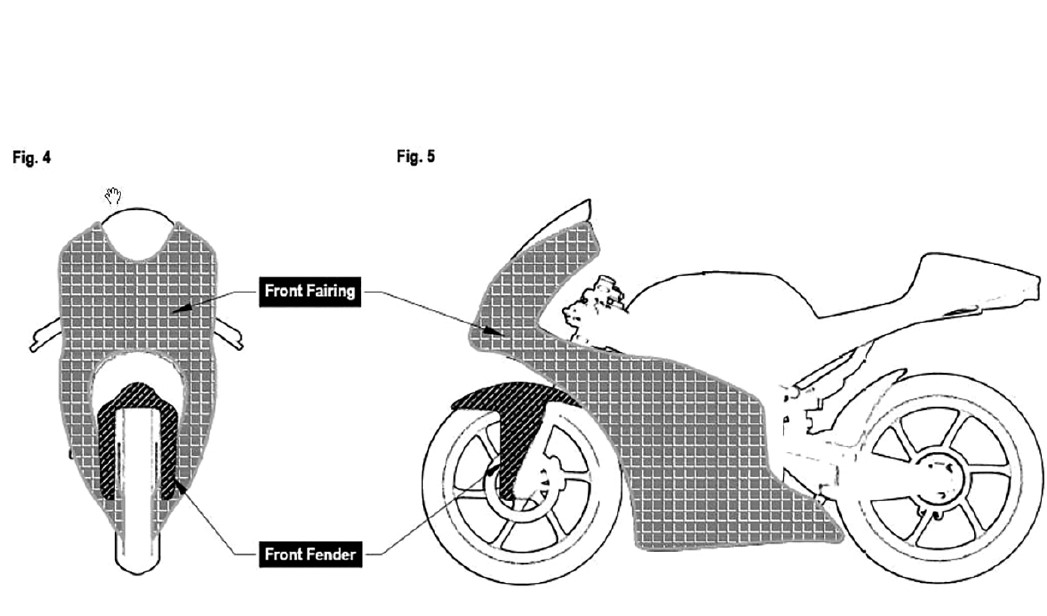What are fairing on a motorcycle

A motorcycle fairing is a shell that goes over the frame of a motorcycle, especially racing motorcycles and sports bikes, to deflect wind and reduce air drag—most of the time, a motorcycle's windshield into the fairing. The main benefit of a fairing on a sport-touring or touring bike is that it reduces aerodynamic drag.
This means that the bike uses less gas and can go faster at lower engine rpm, making the engine last longer. A motorcycle fairing can have any combination of a front fairing, a rear fairing, and a belly fairing. On the other hand, a single fairing may cover all or part of the motorcycle, and it may even protect the rider.
History
Royal Enfield Bullet with options from the factory Airflow touring fairing and front-wheel streamlining that goes with it.
Early on in the 20th century, people knew how important streamlining was. You could see some streamlining on racing motorcycles as early as the 1920s. Even though motorcycles usually have a much higher power-to-weight ratio than cars, bikes, and the rider, in particular, are much less aerodynamic, and aerodynamic drag significantly affects motorcycles. Consequently, any reduction in a motorcycle's drag coefficient improves performance.
The term "fairing" came from the field of aircraft aerodynamics, which was used to smooth the flow of air over a place where two parts disrupted it. Early attempts to simplify were often unsuccessful, which led to instability. Handlebar fairings, like those on Harley-Davidson Tourers, can sometimes make a motorcycle wobble because they throw off the bike's balance.
At first, the motorcycle fairing was just cowlings that went around the front of the bike and made it more comprehensive. They became an essential part of the design over time. Modern fairings add no more than 5% to the frontal area of a machine compared to what it looks like without them. Headlights, instruments, and other things can be put on fairings. If the fairing is attached to the frame, putting different items on the fairing reduces the steering assembly's weight and rotational inertia, making the bike easier to control.
Cbr250rr fairing From 1991 to 1997
It was the first mass-market sport touring motorcycle to come with a full fairing as standard. This started fairings becoming more common in sports and touring motorcycle fairings. The cbr250rr, which came out in 1991 and was the first motorcycle with a factory-fitted head (or nose) fairing, used a frame-mounted tail fairing at the back of a removable dual seat led to a storage compartment.
This design was improved in the integrated design.
The first name Dolphin was used was for the NSU Rennmax 250 cc Delphin. This was given this name because, from the side, the early models' streamlined front wheel mudguard and rising windshield part of the fairing looked like the nose of a dolphin. After dustbin fairings were banned, this design went through more changes that became the norm.
Full
A full fairing is a sizeable front-mounted fairing. It should not be confused with cabin motorcycle fairing or streamliner motorcycle fairings, which fully or partially cover the whole bike. Full fairings cover both the top and bottom of the motorcycle. On the other hand, a half-fairing only covers the top half of the motorcycle and leaves the bottom half-open. The fairing is there to help the bike be more aerodynamic on a race or sports bike, so the windscreen is rarely looked through.
If the rider is sitting up while going fast, he will be tossed around by his fast movement through the air and act as a parachute, slowing down the bike. If the rider lies flat on the tank behind the windscreen, he creates much less aerodynamic drag. With a touring fairing, the upright rider is protected from the worst of this by the high windscreen and wide handlebars. The windshield is also helpful. Full fairings can also save the engine and frame in an accident where the fairings slide on the road instead of the engine cover or structure.
Cbr1100xx fairing with OEM half-fairing and rear-fairing, plus an aftermarket belly pan
Half fairings usually have a windscreen and go below the handlebars. They may go as far down as the sides of the cylinder block, but they don't usually cover the sides of the crankcase or gearbox. Some half fairings can be made into full fairings with "lowers," which are aftermarket kits. Due to how popular these kits are, some motorcycle companies have started making their own complete fairing conversion kits and even come with full equipment already installed on new half-fairing models.
Vfr800 fairing quarter fairing
The triple clamp has a windscreen and a small fairing around the headlight. It is also called a café motorcycle fairing or a bikini fairing. It stops well below the rider's head and relies primarily on an on-air deflection to protect the rider's head and chest from the slipstream.
Handlebar
A Handlebar fairing, also called a headlight fairing or a headlamp fairing is not fixed to the main chassis like other types of fairings, which can't move. A handlebar fairing with a screen is like a more extensive and extended nacelle. It is only attached to the forks or yokes, which hold the headlight, instruments, and different parts of the handlebars. When the bars are turned, it moves with them.
Belly-up
Quarter and half fairings are often paired with a belly pan below the engine. This is done to direct air away from under the motor to reduce aerodynamic lift and for aesthetic reasons. Some rules for track days or races say that belly pans are needed to catch fluids leaking.
Putting the tail light on the Kawasaki S2 tail fairing
Behind the seat and rider is a tail fairing, also called a tail unit or race tail. Some go around the sides and under the saddle and usually have a small space for storage. On sports or race replica bikes with two seats, there are also colour-matched Tail Humps that can cover the passenger seat or be swapped out for it. Since they match the tail unit and side panels, making the bike look more streamlined and like a single-seater racing bike.
When tail units were added to the 250cc S1 Mach I, 350cc S2 Mach II, and 750cc H2 Mach IV models in 1972, vfr800 was the first company to put a tail fairing on a mass-produced motorcycle.
Materials
Motorcycle fairing plastic is often used in factory-made sport bikes and aftermarket fairings because it is strong, flexible, and light. ABS is better than other plastics because it has the strength and stiffness of acrylonitrile and styrene and the toughness of polybutadiene rubber. The amount of each property depends on what you want to happen.
Injection and compression moulding are two common ways to make an ABS plastic fairing.
In injection moulding, melted ABS plastic is put into a mould cavity. So that the material can shrink, constant pressure is used. The plastic then hardens in the mould as it cools. With injection moulds, the thickness of the whole piece is the same. It makes the most accurate and well-fitting final product. Most companies use this method to make plastics.
The plastic is usually heated first in compression moulding and put into a heated metal mould cavity. Pressure is then used to force the plastic to contract and shape the mould. Heat and pressure are kept on the mould until the plastic hardens. Extra plastic is cut off and taken out of the mould. Compression moulds can make products that aren't all the same, and they can also cause flashing, which is extra material on the part that needs to be cut off where two or more aspects of the mould meet.
Fibreglass is made of fibres that are woven together. It is used to strengthen many polymer products. Glass-reinforced plastic, or GRP, is a composite usually called by the name of the material that holds it together. On the race track, fairings made of fibreglass are often used. Most of the time, fibreglass is less heavy and lasts longer than ABS Plastic. Fibreglass that has been damaged can be fixed by putting new layers of woven fibreglass cloth mixed with a polymer like epoxy over the damage, then sanding and finishing.
Motorcycle fairing is the fairing material that is both the lightest and the most expensive. It is used on the fairings of the most dangerous and fast motorcycles.





Log In